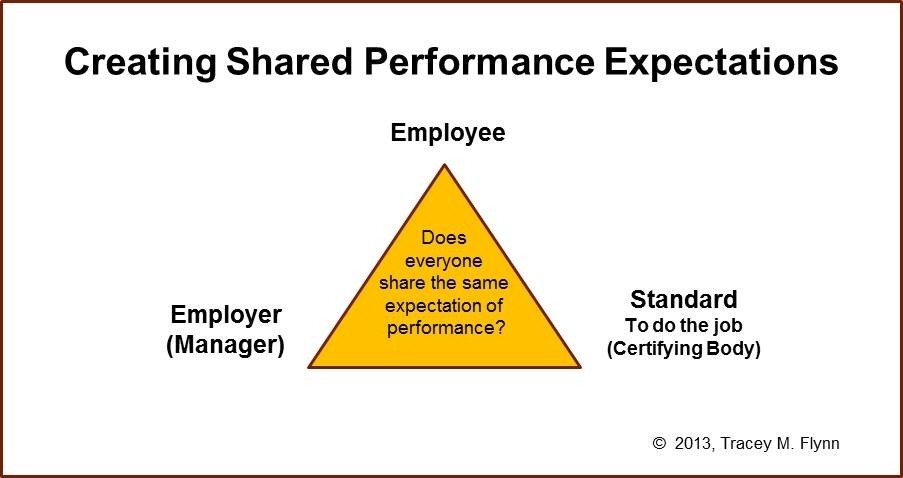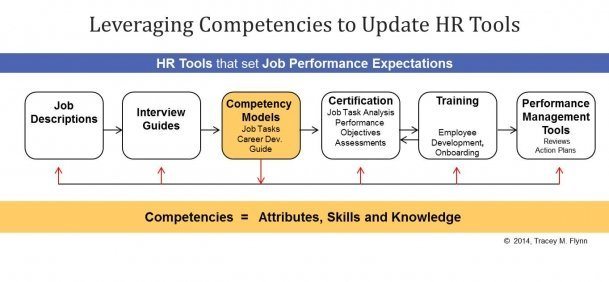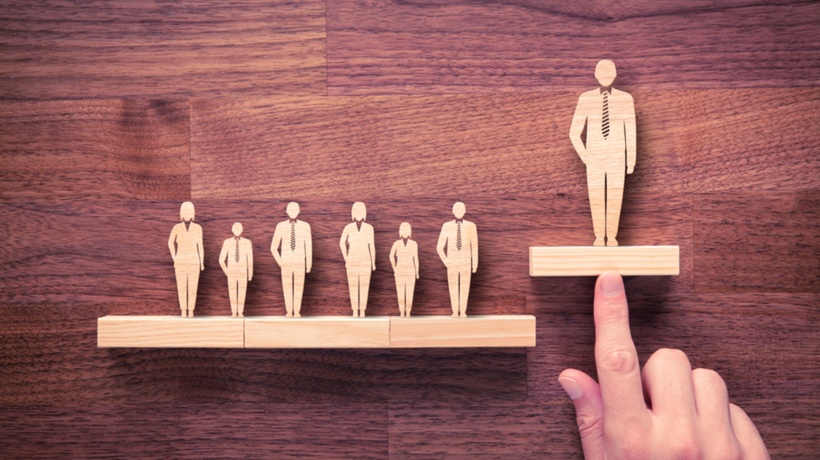Yes, this applies to you
Whether you’re just into “eLearning” or consider competency modeling part of some one’s job in HR or someone else on the instructional design (ID) team, you may want to take a moment to check your understanding of competency models and their usefulness to anyone, at any point, in the adult learning design and development process. Competency models should be online, visual and accessible to everyone.I view competency modeling as part of the whole ID process, it’s just another naming convention for interviewing people to uncover the performance, conditions and criterion required for a job. Does that sound familiar? It should, sounds like writing performance objectives and test items and even a needs assessment, all with slightly different nuances but all very much the same.Everything we do comes down to setting clear performance expectations for the employee (learner), the manager and the standard to do the job.
Jargon
We’re ideally in the business of making information and training accessible to the end user audience and sometimes we’re to blame for not making concepts easy to grasp to our clients, the audience and even to our peers. We have an industry that sometimes hides behind jargon and “competency modeling” is one of those terms. Ask ten people what it means and you’ll get eight versions and at least one blank stare and some artful pontificating.
Competencies are just the attributes, skills and knowledge required to perform a particular job. That’s easy – what do you look for in someone to do the job and what do you have to know and do to perform a job well? An easy way to remember is to just “A.S.K.”. What are the attributes you hire for and what skills and knowledge do you need to train? You have to ASK what’s important to the job. The word attributes can be jargonnie too. Attributes are the personality behaviors that someone should possess as part of their personality. For example, you really can’t train someone to be competitive when they’re really not. (Sidebar: One of the best online personality tests people can use themselves is Gallup’s Strengths Finder. If you have employees use this, then these “strengths” should show up again in the actual competency model at your company.)If competencies sound like a Ph.D. wrote them then they’re not going to be useful. Ensure that you use language that’s concise and clear to the employee and the manager. Have you been as concise as you can and written only the essence of what’s required for job excellence?
The Benefits of Competency Models
The three major benefits in creating competency models are:
- They should create a visual model, a list or picture of the A.S.K. that are the most critical to the role being performed. Believe it or not, many forget the word “model” in competency modeling and leave out a visual representation and just go with a huge document for their audience. Learners need an advance organizer, something to latch on to so that it does not seem overwhelming.
- They can serve as a guide for those creating training and those attending training. The guide identifies what needs to be accomplished to achieve excellence on the job and those creating training can align training against this list to see if they have what’s required and those attending training can align their A.S.K. against this list and see if they need training in any area.
- The information gathered can be repurposed and populated in all HR and Training tools. Setting a consistent performance expectation and the same language is a benefit to your learners, this should be a major goal in any program. Once you get sign off on your competency model it should be used to update all of the other HR tools with the same language. Seems like common sense right? But it’s rarely done. What a waste of resources, could be savings in the thousands right there, not to mention the efficiencies and productivity.
Top Failures of Competency Model Programs
I’ve seen many competency model efforts fail to live up to their potential because those in charge make some obvious errors as they’re too close to the program or because “they’ve always done it that way” or because they haven’t stopped to consider what it is they’re really doing. Busy work is not necessarily effective work. Over the years I’ve compiled a running list of the top failures of competency model programs. Competency models fail everyone when they don’t provide the learners or the company with much benefit and they give L&D folks a bad name. Competency model programs fail to live up to their potential because developers fail to:
- Create and communicate a strategic plan for the competency model effort. (For example is the goal to create training on every single competency or focus on the top x for this year? Is it part of a larger overall workforce planning initiative? Why are we bothering with this? Have we ironed out the politics with competing groups?)
- Establish measures to judge the effectiveness of models/program.
- Demonstrate impact to business goals and meaningful benefits for managers and employees. (Demonstrate what a competency model is and what it can achieve.)
- Have a clear process and tools to be used by the team gathering and providing the input.
- Use pre-populated tools /visuals to save time when interviewing employees. (Starting from a blank slate is a waste of time)
- Train the training (ID) staff and HR on how to develop. (There’s really no need to establish a separate competency group or competing entity within a corporation. All IDs should master writing performance objectives for training, for tests, certification and competency models.)
- Use SME time wisely. They have an interview process which includes a set number of individuals worldwide. (For example, interview (25) employees worldwide when their input may be undone by a single Sr. manager in the end.)
- Have a single decision-maker on the wording of competencies. (Some let the process spiral out of control with wordsmithing.)
- Establish effective measurement tools for competency mastery. (Surveys with large rating scales, few tests, even less demonstration of skill and are subjective at best. Compare employee vs. manager ranking and look at gap) Some use beginner, intermediate, advanced rating scales. This is not productive and the language does not distinguish enough between the levels. I think it’s more productive to assess employees against one standard to do the job well.
- Focus on the top competencies required for the role. They try to include every nuance of a competency, not focus on the top ones required for the most success in the role. You’ve got to let some stuff go. There are limits to development budgets and resources. What will give the business the best leverage?
- Focus on the observable behavior – performance standard. (The competencies are overly wordy for no reason other than that’s the way they’ve seen them done. They should focus on the most concise and clear language for shared meaning between the manager and the employee.)
- Achieve buy in from managers in advance of this effort. (Get real stakeholder ownership. Can’t be rolling it out and still trying to achieve buy-in at all levels.)
- Rollout effectively to employees and managers. (Show value in the effort to employees and reduce their burden of completing one more justification of their worth, show how it’s repurposed in other HR tools or better yet how it eliminates wasted efforts.)
- Be used by managers and employees in meaningful discussion and targeted action plans.
- Use clear language. (not HR and Training jargon like “behavioral indicators” – language is obtuse at best, not meaningful. Even using the term “competency model” can be off-putting and confusing to some in your organization. Given the audience your efforts may be better utilized in a campaign that removes the jargon.)
- Repurpose the results and update HR tools; job descriptions, onboarding programs, manager feedback, performance support/review tools, and certification programs. (see graphic above)
- Use visuals and make user friendly to employees and managers, remember it’s a “model.”
- Focus on how the employees and managers are to achieve the competencies. (Overwhelm employees with too many resources – fail to selectively target action plan.)
- Take ownership for the success of the program.( If the program fails when competency models are passed on to the HR group, managers or whomever then it is a failure on your part too. If the program is DOA – dead on arrival, then what have we really created?)
- Review and update on a regular basis. (Create flexible and accessible online working documents.)
A (red flag) warning for anyone developing, using or managing competency models is if the company has competing competency modeling programs. This shows a lack of strategic planning on the part of the company and they may not know exactly what or why they’re conducting competency modeling. One hand may not know what the other is communicating and at worst they may be competing with each other for resources and learner mindshare. If there are competing programs then chances are you’ll find many of the top (20) failures listed above in action. At a minimum they’ll be confusing their audience and annoying them with additional work to figure which program trumps the other. So there you have it competency models demystified, all you have to do is just remember to A.S.K. (attributes, skills and knowledge).










